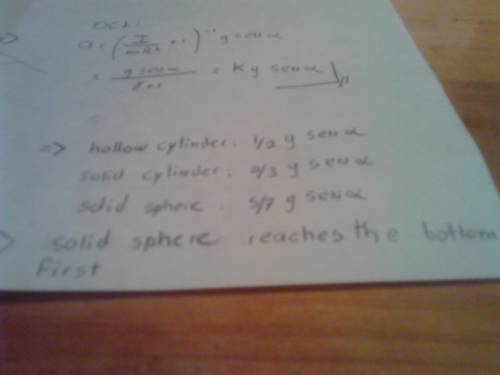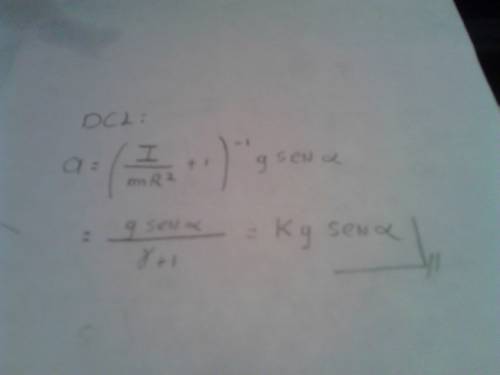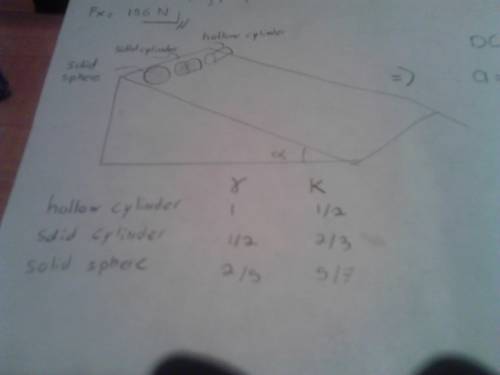
Physics, 30.07.2019 14:00 nathanphelps2468
Three objects of uniform density—a solid sphere, a solid cylinder, and a hollow cylinder— are placed at the top of an incline (fig. cq10.13). they are all released from rest at the same elevation and roll without slipping. (a) which object reaches the bottom first

Answers: 1


Other questions on the subject: Physics

Physics, 22.06.2019 08:30, fernandoramirez086
Does anyone know how to solve this problem? i really need . i made an attempt but i just cant get it. a metal rod is 25.000 cm long at 25.0 degrees celsius. when heated to 102.0 degrees celsius, it is 25.054 cm long. what is the coefficient of linear expansion for this metal.
Answers: 3

Physics, 22.06.2019 13:20, Tess3492
It is reasonable to assume that the bulk modulus of blood is about the same as that of water (2.2 gpa). as one goes deeper and deeper in the ocean, the pressure increases by 10000 pa for every meter below the surface. if a diver goes down 80.0 m in the ocean, by how much does each cubic centimeter of her blood change in volume? give the answer in cubic centimeters (actually one cubic centimeter equals one milliliter).
Answers: 2

Physics, 22.06.2019 15:40, caveman171
Apotter's wheel moves uniformly from rest to an angular speed of 0.20 rev/s in 32.0 s. (a) find its angular acceleration in radians per second per second. rad/s2 (b) would doubling the angular acceleration during the given period have doubled final angular speed?
Answers: 1

Physics, 22.06.2019 16:00, chamyaparker
What is the freezing point of radiator fluid that is 50% antifreeze by mass? kf for water is 1.86 ∘c/m.
Answers: 3
You know the right answer?
Three objects of uniform density—a solid sphere, a solid cylinder, and a hollow cylinder— are placed...
Questions in other subjects:

History, 27.11.2020 17:50

English, 27.11.2020 17:50

Social Studies, 27.11.2020 17:50


Mathematics, 27.11.2020 17:50


Mathematics, 27.11.2020 17:50

English, 27.11.2020 17:50







